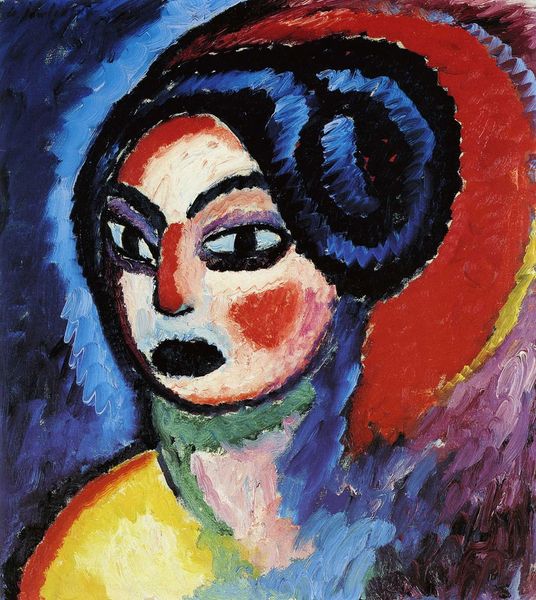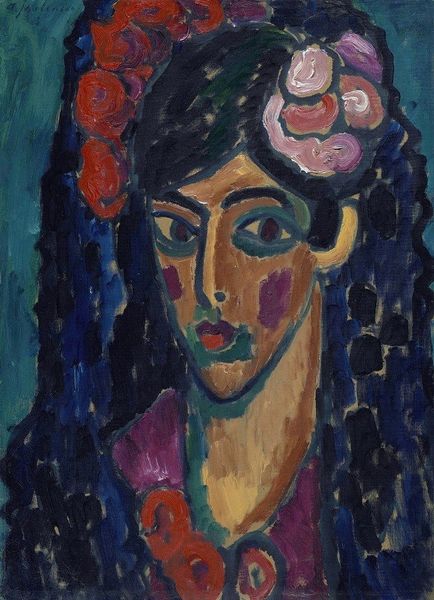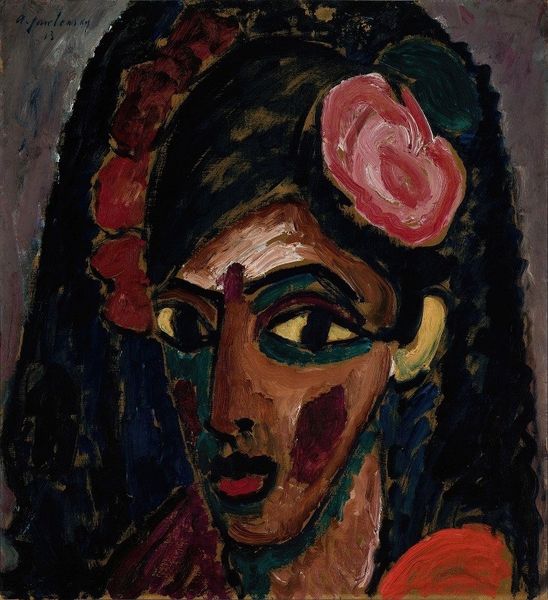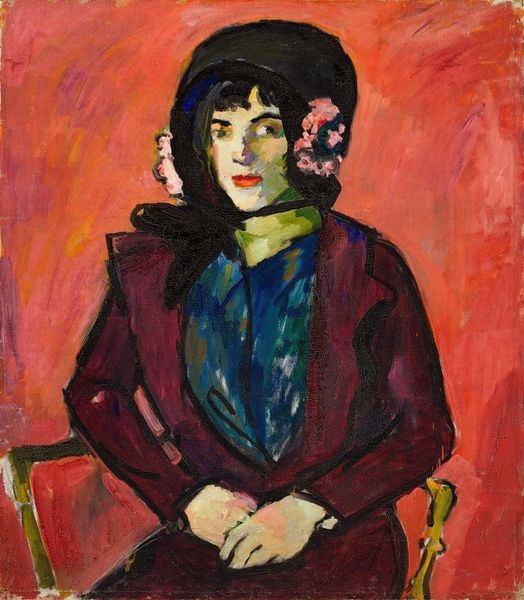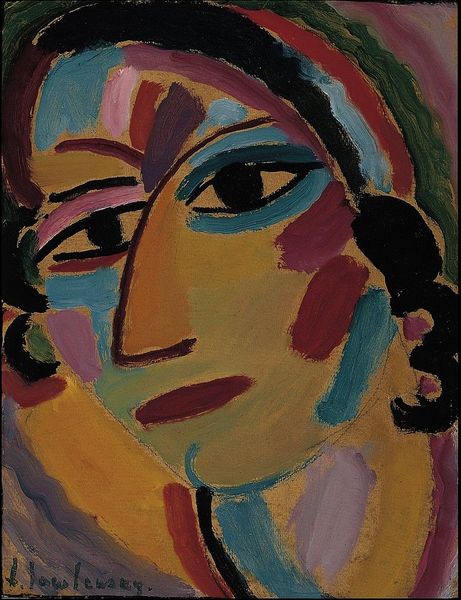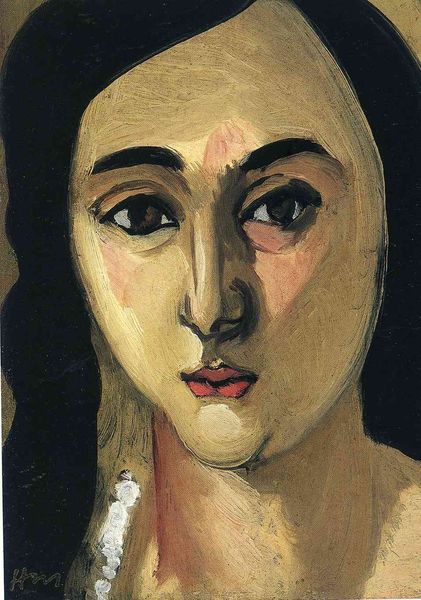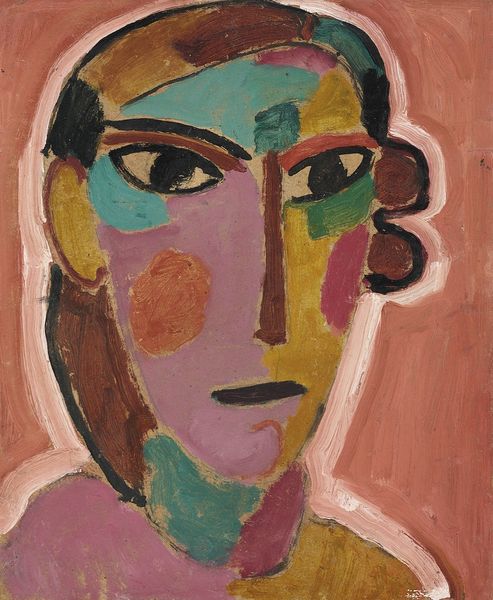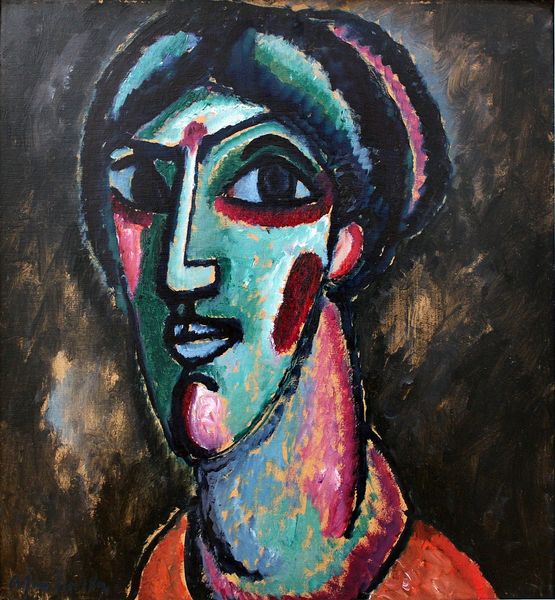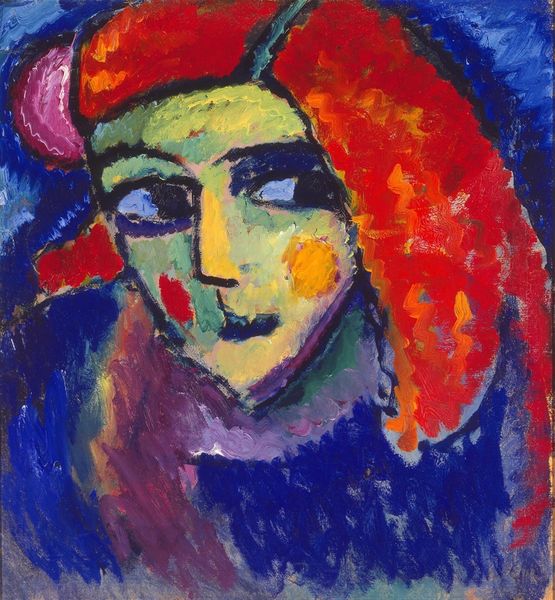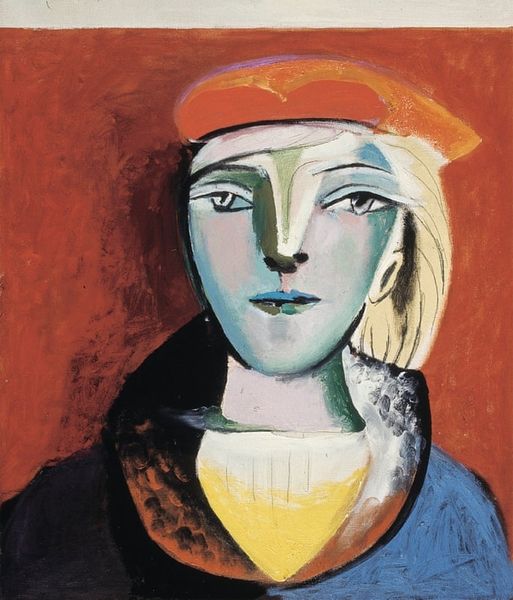
oil-paint
#
portrait
#
art-nouveau
#
oil-paint
#
german-expressionism
#
oil painting
#
expressionism
Copyright: Public domain
Curator: Immediately, I’m struck by the intensity of this portrait, the colors so vibrant, especially those crimson flowers against her dark hair. There's almost a sense of theatrical drama in this intimate composition. Editor: Indeed. What we are viewing is Alexej von Jawlensky's "Spanish Girl" from 1912, an oil painting that embodies much of the artist's personal struggle between identity, artistic purpose, and perhaps, colonial overtones implied in such works during that historical era. The use of "Spanish Girl" as title could reinforce a stereotype of exoticism for a western, predominantly white audience. Curator: It's a curious point to make. On a formal level, the boldness of the lines and the flat planes of color owe so much to German Expressionism. However, Jawlensky isn't simply representing her; he seems to be imbuing her with a psychological presence, confronting viewers and the male gaze by extension. How does that interplay with identity resonate for you? Editor: Absolutely. Her intense gaze resists easy interpretation; it confronts. You're right about Expressionism's hand, however, within that milieu, think about how female sitters frequently are placed, it is never innocent! We can situate this piece within early 20th-century anxieties surrounding both burgeoning female emancipation but simultaneous desires to place figures into easily digestible, patriarchal settings. Curator: It feels, perhaps, less about precise socio-political commentary and more about harnessing that moment of self-actualization on canvas... Jawlensky creates a tangible connection, a moment where we’re face-to-face not just with an image but with her being. Editor: I am somewhat drawn into its ambiguity - its cultural impact on that period versus a deeper more probing response from today’s contemporary art criticism circles when examining themes that relate directly with ethnicity, gender performativity or self-definition that Jawlensky hints at but does not explore fully Curator: I find I leave more enlightened, pondering, not about clear answers but what those dialogues could represent. Editor: An exercise on looking as something continually reevaluated as our sociopolitical understandings evolve, an invaluable artistic gift, wouldn’t you say?
Comments
No comments
Be the first to comment and join the conversation on the ultimate creative platform.
